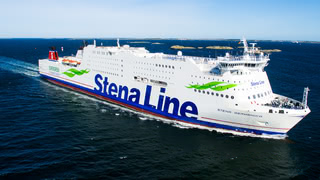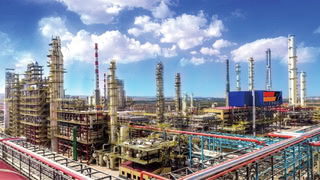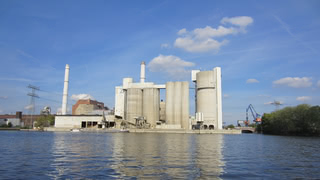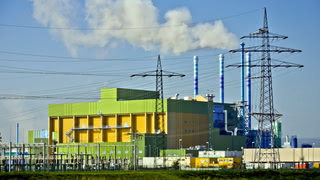Ammonia and Methanol 101 Pros and Cons
Two chemicals are considered the most promising options for future greener shipping fuels: Ammonia and Methanol. We look at the pros and cons of each.

Methanol and ammonia made from green electricity are considered the most promising candidates for future clean shipping fuels. To understand why, it is worth first looking at the possible alternatives.
The most obvious and direct way to power ships with green electricity in ships would be by using batteries. Some passenger ferries already use them, and their market share will certainly grow in the future. But batteries are limited due to their weight, which makes them only suitable for short distances. Even with breakthroughs in battery technology, it is unlikely that they will be able to power container shipping.
Therefore, a denser form of energy is required, and this leaves chemicals made from renewable energy. The simplest option here is hydrogen. But while hydrogen has a high energy density per weight, it has a very low energy density per volume. In other words, it needs a lot of space, and that also limits the distances that can practically be achieved with hydrogen-powered ships. Again, there likely will be a market for hydrogen-powered ships in the future, but it will probably not be the fuel of choice for larger ships and long distances.
What is required is a fuel with a higher energy density, and that leaves more complex molecules made from hydrogen. Methanol and ammonia represent two different paths in their chemistry: Methanol is a molecule containing carbon, oxygen, and hydrogen, while ammonia is composed of nitrogen and hydrogen.
Today, both methanol and ammonia, which are widely used in the chemical industry, are usually produced from fossil fuels. But this may change soon, green production facilities for both are in the pipeline worldwide.
Methanol is closer to market
Methanol has the advantage of being similar to traditional fuels. It contains carbon and is a liquid. This makes it easier to allow dual-fuel engines that can run traditional fuels or methanol. Such dual-fuel engines already exist in ships today.
Using ammonia as a fuel is not even legal today. The IGC code of the International Maritime Organization forbids the use of toxic products like ammonia as fuels. Before ammonia can be used as a fuel, regulations need to change.
So why even bother with ammonia when methanol is closer to the market and not as toxic? As methanol contains carbon molecules, it generates carbon dioxide when burned. To be a green fuel, methanol needs to be made from feedstocks that are not of fossil fuel origin. That can be biomass – or e-methanol, made from green hydrogen and carbon dioxide.
Biomass is often controversial and the amount of it that can be sourced sustainably is limited. Therefore, in the long run, most of the supply would have to come from e-methanol. And that means e-methanol production needs a supply of carbon dioxide.
When carbon dioxide from fossil fuel origin is used to produce e-methanol fuel it does not avoid these emissions; it just delays them. The carbon content will eventually be released as carbon dioxide into the atmosphere. For really green methanol, this leaves not many options: The carbon dioxide can come from biomass burning — or direct air capture.
Ammonia avoids the need for a carbon source
Direct air capture technology extracts carbon dioxide directly from the atmosphere. But this technology only exists in the early stages and is energy intensive and expensive — for a simple reason: Less than half a percent of the atmosphere consists of carbon dioxide.
This is what makes ammonia an attractive alternative: It does not contain any carbon and does not require a carbon source. Ammonia is made from hydrogen and nitrogen — and the latter is much more easily available. The atmospheric content of nitrogen is 78 percent.
It is, therefore, expected that in the long run, ammonia production will be more efficient. But ammonia comes with its own challenges: The gas is extremely toxic. When inhaled in larger quantities, it can be fatal. There are also concerns about spills. Ammonia can harm marine life and it can cause eutrophication (algae blooms).
Some see "intolerable" risks with ammonia
The organization "Together in Safety" published a report about the safety of various future fuel options last year. According to the report, methanol is the safest option, while ammonia has several risks that the report rates as "intolerable".
Another concern are emissions caused by ammonia combustion. Burning ammonia produces no carbon dioxide, but it does produce emissions of NOx and N₂O. NOx emissions contribute to air pollution and are a health risk. N₂O, also known as laughing gas, is a potent greenhouse gas. Furthermore, incomplete combustion can lead to ammonia emissions.
It should be noted that any fuel combustion can create these nitrogen gases, but the combustion of ammonia creates them in much larger quantities. For ammonia to succeed as a green fuel, apart from strong safety standards, it will also need technology to limit these emissions. Emission filtering based on SCR technology may be able to avoid both NOx and N₂O emissions.
In a report about ammonia as a fuel from 2020, the company Topsoe writes, "catalysts for the combined removal of NOx and N₂O from exhaust gasses are commercially available. The cost of the SCR system and the resulting exhaust levels NOx and N₂O is similar to what is seen with SCR for conventional fuels."
A different path to avoid emissions caused by the combustion of ammonia could be fuel cells. These convert the chemical energy to electricity without combustion, avoiding most concerns about emissions. However, ships with fuel cells are likely even further in the future than ammonia combustion engines.
A research project funded by the European Union called Ship FC wants to test the use of an ammonia-powered fuel cell in the coming years.
Fuel cells powered by methanol are also a theoretical option. The company Blue World Technologies is producing methanol fuel cells for the shipping industry. They are currently only targeting auxiliary power units (APUs) on ships to replace diesel-powered generators. In the long run, the company plans to also provide fuel cells for ship propulsion.
In summary, it can be said that methanol appears to have more advantages in the short term, while ammonia might win in the long run. Methanol is closer to market, engines are available, and shipping companies have already ordered ships with methanol engines. However, at some point, green methanol production could run out of easily accessible carbon dioxide sources and would have to use direct air capture. If ammonia can solve its safety and emission problems, then it could provide a more efficient option in the future.
Update (May 10 2025)
The mentioned ShipFC research project was suspended in February 2025 and will probably not be realized.
Since writing above article, I became a lot more skeptical about ammonia due to its safety risks and think that this is a strong argument in favor of methanol even in the long run. I am particularly concerned about the combination of a toxic and dangerous fuel with poor workers rights in the shipping industry.
This text was originally published on the shipping news web page Fathom World, which is no longer online. I am republishing my old articles here with minor corrections and updates.
Author: Hanno Böck



